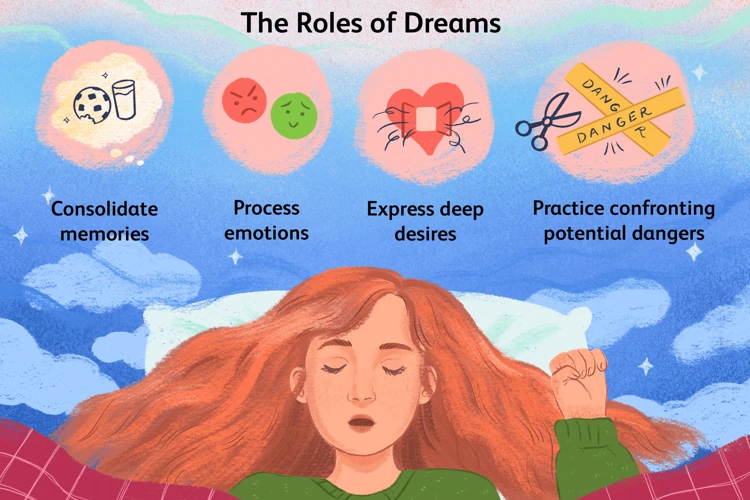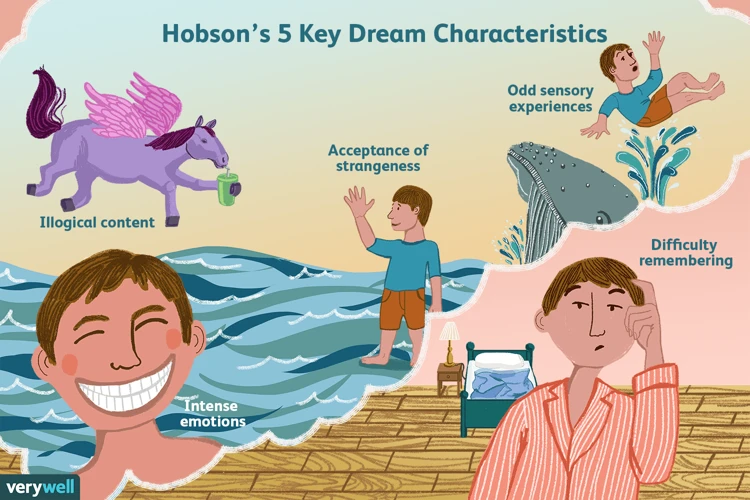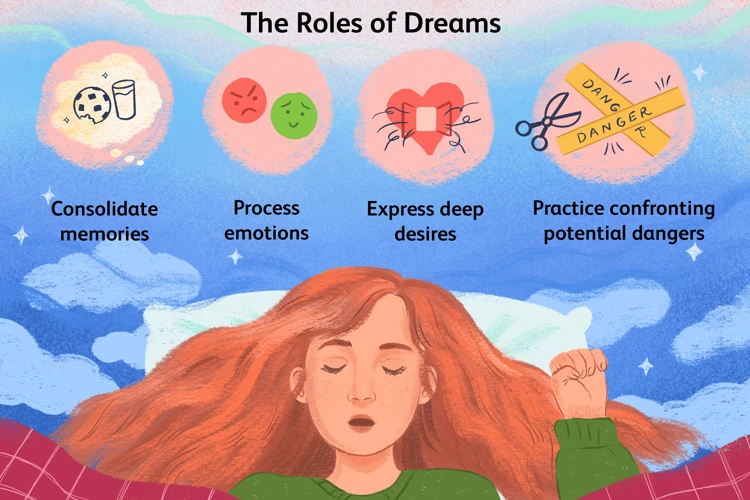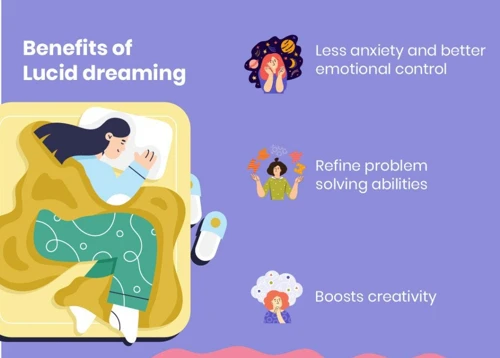Dreaming is a mysterious phenomenon that has captivated human beings for centuries. It is a realm where the boundaries of reality blur, allowing us to explore the depths of our imagination and subconscious mind. However, dreams are not just a source of entertainment or enigmatic stories. They have the potential to enhance our problem-solving skills in ways we never thought possible. Through this article, we will delve into the fascinating world of dreaming and uncover how it can be harnessed to unlock our creative potential, find innovative solutions, and improve our overall ability to solve complex problems. So, buckle up and prepare to embark on a journey where dreams and reality converge to transform the way we approach challenges.
What is Dreaming?

Dreaming is an enigmatic state of consciousness that occurs during sleep. Dreaming is characterized by a vivid and immersive simulation of experiences, thoughts, emotions, and sensory perceptions that can feel incredibly real. Scientists believe that dreams are a result of the brain’s activity during the REM (Rapid Eye Movement) stage of sleep, which is when most dreaming occurs. During this stage, the brain becomes highly active, and the eyes move rapidly beneath our closed eyelids. Dreams can range from mundane and ordinary to fantastical and surreal, taking us on a journey beyond the confines of our waking reality. Despite centuries of curiosity, the exact purpose and meaning of dreams remain a topic of ongoing debate and exploration in the field of neuroscience and psychology. However, research suggests that dreams serve various functions, including memory consolidation, emotional processing, and problem-solving. In the next section, we will delve deeper into the stages of sleep to gain a better understanding of where dreams fit into the sleep cycle.
Definition of Dreaming
Definition of Dreaming: Dreaming is a remarkable phenomenon that occurs during sleep, characterized by the manifestation of a rich array of images, emotions, sensations, and thoughts that feel genuine and immersive. It is a mental experience that often elicits strong emotional responses and can range from the mundane to the fantastical. While dreaming, individuals may find themselves engaged in vivid narratives, scenarios, or even abstract sequences that may defy the laws of reality. Dreams can involve familiar people, places, and events from waking life, or they may introduce entirely new and unfamiliar elements. The content of dreams can be influenced by a variety of factors, such as personal experiences, memories, emotions, and current thoughts. Despite the subjective nature of dreams, they play a significant role in various aspects of human life, including psychological, emotional, and cognitive functioning. Scientists continue to explore and unravel the complexities of dreams, seeking a deeper comprehension of this intriguing phenomenon. To gain insight into the science behind dreaming and its potential benefits, you can refer to “The Science Behind Lucid Dreaming and Its Potential Benefits”.
Stages of Sleep
The stages of sleep play a crucial role in the overall sleep cycle and the occurrence of dreaming. Sleep is divided into several distinct stages, each with its own unique characteristics and brainwave patterns. These stages include NREM (Non-Rapid Eye Movement) sleep and REM (Rapid Eye Movement) sleep.
During the NREM sleep stage, the body gradually relaxes, and brain activity slows down. This stage is further divided into three sub-stages: N1, N2, and N3. N1 is the lightest stage of sleep, where the transition between wakefulness and sleep occurs. In N2, brainwaves become slower, and sleep spindles and K-complexes may occur. N3 is the deepest stage of sleep, also known as slow-wave sleep, where delta waves dominate the brain activity. This stage is crucial for physical restoration and recovery.
REM sleep is the stage associated with active dreaming. It is characterized by rapid eye movements, vivid dreams, and increased brain activity. During REM sleep, the brain becomes highly active, resembling the patterns seen during wakefulness. The body, however, experiences temporary paralysis to prevent us from acting out our dreams.
The sleep cycle typically consists of multiple cycles, with each cycle lasting approximately 90-120 minutes. Throughout the night, the proportion of time spent in each stage changes, with REM sleep becoming longer in later cycles.
Understanding the stages of sleep is essential in comprehending the role of dreaming and its impact on problem-solving and creativity. The next sections will explore how dreaming can enhance these cognitive processes and provide techniques for utilizing dream experiences to unleash our creative potential and solve problems effectively. To learn more about unleashing creativity through dream journaling, check out our article on dream journaling. Additionally, if you’re interested in the cultural aspects of dream interpretation, you can dive into our article on dream interpretation.
Role of Dreams in Problem-Solving

Dreams play a significant role in problem-solving and can provide valuable insights and solutions to complex challenges. Let’s explore how exactly dreams contribute to our problem-solving abilities:
- Link Between Dreams and Creative Thinking: Dreams have a direct connection to our creativity. When we dream, our minds are freed from the limitations of reality, allowing new ideas and concepts to emerge. In this altered state of consciousness, our brains can make novel connections between seemingly unrelated pieces of information, leading to innovative solutions to problems.
- Enhancing Divergent Thinking Through Dreams: Divergent thinking refers to the ability to generate multiple ideas and perspectives. Dreams can enhance divergent thinking by providing a constant stream of imaginative scenarios and associations. By tapping into the abundance of creativity within our dreams, we can expand our problem-solving capabilities and consider unconventional approaches.
- Using Dream Content for Problem-Solving: Dreams can act as simulations or rehearsals for real-life situations. They provide a safe space to explore different options and potential outcomes. By paying attention to recurring themes or symbols in our dreams, we can extract valuable insights and apply them to real-world problems.
Indeed, dreams are not just the random musings of our minds during sleep. They hold the potential to unlock our true problem-solving abilities and fuel our creativity. In the next section, we will delve deeper into the specific problem-solving strategies that dreams employ.
How Dreaming Enhances Creativity

Dreaming has long been associated with unlocking the gates of creativity. Research has shown a fascinating link between dreams and creative thinking, suggesting that dreaming enhances our creativity in unique ways. During REM sleep, the stage when dreams occur most frequently, our brain is highly active, forming new connections and associations between different ideas and concepts. This process, known as divergent thinking, allows us to generate a plethora of innovative solutions and ideas. Dreams provide a safe and uninhibited space where we can explore unconventional thoughts, break free from the constraints of logic, and let our imagination run wild. The surreal and often nonsensical nature of dreams encourages the brain to make unexpected connections, leading to novel insights and creative breakthroughs. Dreams can serve as a rich source of inspiration for creative endeavors, providing a wellspring of ideas, imagery, and emotions that can be consciously harnessed in various forms of artistic expression. In the next section, we will delve into specific ways in which dreams can enhance problem-solving skills.
Link Between Dreams and Creative Thinking
The link between dreams and creative thinking is a fascinating area of study that has intrigued scientists, artists, and thinkers throughout history. Dreams have long been recognized as a source of inspiration for creative endeavors, offering a glimpse into the vast realm of the subconscious mind. Research suggests that dreams allow our brains to make unexpected connections, combine disparate ideas, and explore novel possibilities. When we dream, the logical constraints and boundaries that govern our waking thoughts are temporarily suspended, giving rise to a surge of creativity. Dreams have the ability to present us with unique and unconventional perspectives, leading to innovative solutions and breakthrough ideas. The surreal and symbolic nature of dreams often encourages thinking outside the box, sparking unconventional insights and imaginative thinking. Artists, writers, and musicians have often credited their dreams for providing them with transformative ideas and inspiration. The link between dreams and creative thinking highlights the power of the subconscious mind and its capacity to generate innovative thoughts and concepts. By recognizing and harnessing the creative potential of our dreams, we can tap into a powerful resource for problem-solving and self-expression. So, the next time you wake up from an intriguing dream, take a moment to ponder its hidden messages and imaginative possibilities. You never know what incredible ideas may emerge from the depths of your dreaming mind.
Enhancing Divergent Thinking Through Dreams
Enhancing divergent thinking through dreams can be a powerful tool for boosting creativity and generating innovative ideas. Divergent thinking refers to the ability to think outside the box, explore multiple possibilities, and generate a wide range of ideas. Dreams have the unique ability to tap into our subconscious mind, where creative thoughts and ideas often reside. When we dream, our mind is free from the constraints of logic and reality, allowing for unconventional connections and associations to form. This can lead to the emergence of novel and original ideas that may not have been accessible during our waking hours. By paying attention to the content of our dreams and analyzing the symbols and themes present, we can gain valuable insights that can inspire our creative thinking. Keeping a dream journal, where we record and explore our dreams, can be an effective way to enhance divergent thinking by capturing and reflecting on the imaginative ideas that arise from our dreams. Additionally, discussing and brainstorming with others about the content of our dreams can further stimulate and expand our divergent thinking capabilities. The incorporation of dream-based techniques, such as dream visualization or lucid dreaming, can also serve as powerful tools to enhance divergent thinking and unlock our creative potential. By embracing the unique qualities of dreaming, we can tap into the wellspring of creativity within us and nurture our ability to think divergently.
Using Dream Content for Problem-Solving
Using dream content for problem-solving is an intriguing concept that has gained attention in recent years. When we dream, our minds have free reign to explore ideas, scenarios, and possibilities that may be hindered or limited in our waking state. By analyzing and interpreting the content of our dreams, we can tap into a wellspring of inspiration and insight that can be applied to real-life problem-solving situations. Here are a few ways in which dream content can be utilized for problem-solving:
1. Symbols and Metaphors: Dreams often use symbolism and metaphors to express ideas and emotions. By deciphering the meaning behind these symbols, we can gain new perspectives and insights into complex problems. For example, if you dream of being chased by a fearsome creature, it may represent an unresolved fear or obstacle in your waking life. By addressing and understanding the symbolism, you can uncover potential solutions or ways to overcome challenges.
2. Visualizing Solutions: Dreams have the unique ability to present scenarios and images that may not be immediately apparent in our waking thoughts. By vividly visualizing a problem and its possible solutions in a dream, we can explore different options and outcomes. This allows us to think outside the box and consider alternative approaches that we may not have considered while awake. Upon waking, we can recall these visualizations and apply them to our real-life problem-solving process.
3. Unconscious Problem-Solving: Our unconscious mind plays a crucial role in problem-solving, as it continues to work on challenges even when our conscious mind is at rest. Dreams can provide a window into this unconscious problem-solving process, as they often incorporate fragments of our waking life and merge them with newly generated scenarios. By paying attention to the insights and ideas that surface in our dreams, we can tap into the wisdom of our unconscious mind and potentially discover innovative solutions to complex problems.
4. Resolving Emotional Obstacles: Dreams can also serve as a platform for emotional processing and resolution. Many problems we encounter in life are not solely intellectual or logical but also tied to our emotions and personal experiences. Dreams can help us confront and process these emotions, providing a fresh perspective or healing insights that can contribute to problem-solving. By exploring the emotional content of our dreams, we can gain a deeper understanding of ourselves and our challenges, leading to more effective problem-solving strategies.
Incorporating dream content into problem-solving requires a willingness to explore and interpret the symbolism and messages that arise during sleep. The next section will delve into techniques that can enhance problem-solving in dreams, allowing us to harness the power of our dream state for creative solutions and breakthroughs.
Problem-Solving Strategies in Dreams

Dreams have the remarkable ability to facilitate problem-solving by utilizing unique strategies that tap into the depths of our unconscious mind. One problem-solving strategy employed in dreams is the use of symbolism and metaphors. Dreams often present challenges and dilemmas through symbolic representations, allowing the dreamer to explore and analyze problems from different angles. Additionally, dreams enable individuals to visualize potential solutions in a creative and unrestricted manner, providing a fresh perspective on complex issues. Dreams also contribute to problem-solving by engaging in unconscious processing, where the mind continues to work on unresolved problems while we sleep. This unconscious problem-solving can lead to sudden insight and breakthroughs when we wake up. Dreams play a crucial role in resolving emotional obstacles that may hinder problem-solving, offering a safe space to confront and process unresolved feelings and anxieties. In the next section, we will explore how dreams and memory function are interconnected and how dreaming enhances memory consolidation and information processing.
Symbolism and Metaphors
Symbolism and metaphors play a crucial role in the problem-solving process within dreams. Dreams often present information and solutions in symbolic or metaphorical forms rather than straightforward representations. This use of symbolism allows the subconscious mind to explore multiple perspectives and possibilities, bypassing logical limitations and opening up new avenues of thinking. For example, a dream about being chased by a ferocious animal could symbolize a feeling of being pursued or threatened by a problem in waking life. By deciphering the symbolic meaning behind such dreams, individuals can gain valuable insights into their challenges and find innovative approaches to solving them. Metaphors, on the other hand, provide a way to conceptualize abstract concepts or complex problems by comparing them to more familiar or tangible experiences. These metaphors can act as bridges between the conscious and subconscious mind, allowing for a deeper understanding of the problem at hand. By recognizing and deciphering the symbolism and metaphors present in dreams, individuals can tap into the hidden resources of their mind and unlock creative solutions that might not have been accessible in their waking state. It is through these symbolic representations that dreams offer unique perspectives and stimulate the problem-solving process in extraordinary ways.
Visualizing Solutions
Visualizing solutions is an essential aspect of problem-solving, and it is no different when it comes to dreaming. During dreams, our minds have the unique ability to create vivid visual imagery and scenarios that can be harnessed to find solutions to real-life problems. When we encounter a particularly challenging problem, our dreams can serve as a platform for exploring different potential solutions and visualizing their outcomes. This process allows us to mentally test different scenarios and evaluate their feasibility and effectiveness without the limitations and constraints of the waking world. By visualizing solutions in our dreams, we tap into the power of our imagination and unconscious mind to generate innovative ideas and perspectives that may not have surfaced during our waking hours. This visualization process can be particularly impactful when we actively engage with our dreams, such as through techniques like lucid dreaming or dream incubation. In these altered states of consciousness, we have the opportunity to actively steer the course of our dreams, focusing on specific problems or challenges and visualizing potential solutions with clarity and intent. Embracing the visual power of our dreams can unlock a vast realm of possibilities and provide fresh insights and perspectives that can enhance our problem-solving skills in the waking world. So, next time you have a complex problem to solve, consider harnessing the potential of your dreams to visualize solutions and unlock your creative problem-solving abilities.
Unconscious Problem-Solving
Unconscious problem-solving is a fascinating aspect of dreaming that occurs when our minds are free from conscious constraints and can explore solutions to complex problems. During sleep, our brains continue to work on unresolved issues, even when we are not actively thinking about them. Unconscious problem-solving in dreams allows us to tap into the immense power of our subconscious mind, which can often see connections and patterns that elude us in our waking state. This process is often referred to as “incubation,” where our minds incubate the problem, allowing it to simmer and marinate in the background. Through this unconscious processing, dreams can provide us with insightful and unexpected solutions to our problems. It’s like having a personal brainstorming session while we sleep, with our minds exploring different possibilities and potential avenues for resolution. This unconscious problem-solving is not bound by the same limitations and biases that our conscious mind may have, making it a powerful tool for creative problem-solving. So, the next time you find yourself facing a challenging problem, consider giving it some thought before bed and see what insights your dreams may bring forth.
Resolving Emotional Obstacles
Dreams have a unique ability to help us navigate and resolve emotional obstacles that we may encounter in our waking lives. When we are faced with challenging emotions or unresolved issues, our dreams can act as a safe space for exploring and processing these emotions. During sleep, our subconscious mind creates symbolic representations of these emotional obstacles, allowing us to confront them in a metaphorical or abstract way. By examining and analyzing the emotional content of our dreams, we can gain insights into our deepest fears, desires, and conflicts. These insights can then be used to find resolution and healing in our waking lives. For example, if someone is struggling with feelings of guilt, their dreams may present scenarios or symbols related to guilt, providing an opportunity to explore these emotions and understand their underlying causes. Through this process, individuals can gain a deeper understanding of themselves and work towards resolving emotional obstacles that may be holding them back. So, the power of dreaming lies not only in solving external problems but also in transforming and resolving internal emotional challenges. Remember, dreams can serve as a bridge between our conscious and subconscious mind, offering a unique perspective and facilitating emotional growth and healing.
Memory Consolidation and Information Processing

Memory consolidation and information processing are crucial functions that occur during sleep, including the dreaming stage. Dreaming plays a significant role in the consolidation of memories, helping to solidify newly acquired information and integrate it into our existing knowledge network. Studies have shown that the brain actively replays and reactivates neural connections associated with recently learned material during sleep, strengthening the memory trace. This process not only aids in retaining information but also enhances learning and problem-solving abilities. Dreams provide a unique context for the brain to process emotional experiences, helping to regulate and manage emotions effectively. Through dreams, the brain can revisit and rework emotional events, resolving any lingering conflicts or unresolved issues. This emotional processing contributes to our overall well-being and mental health. The intricate relationship between dreaming, memory consolidation, and emotional processing underscores the importance of quality sleep in optimizing cognitive function and problem-solving skills.
Dreaming and Memory Function
When it comes to memory function, dreaming plays a crucial role. During sleep, particularly in the REM stage, the brain consolidates and processes memories, transferring them from short-term to long-term storage. This process, known as memory consolidation, helps solidify the information we’ve acquired throughout the day, making it easier to retrieve and remember in the future. Dreams are not mere random fragments of thoughts during this process; they actually contribute to the consolidation of memories. Dreaming allows the brain to replay and reprocess the events of the day, reinforcing neural connections and strengthening memory traces. Dreams can also help with memory retrieval. As we dream, we may recall past experiences and memories that we may have forgotten or not thought about consciously for a long time. This phenomenon, known as dream recall, can be enhanced by keeping a dream journal and actively engaging with dream content. By reflecting on and recording dreams, we can improve our ability to remember and recall memories in our waking life. Dreaming and memory function go hand in hand, providing a unique and valuable contribution to our cognitive abilities.
Enhanced Learning Through Dreams
Enhanced Learning Through Dreams:
Dreams not only have the potential to enhance problem-solving skills, but they can also play a vital role in enhancing learning and information processing. When we sleep, our brain consolidates and integrates newly acquired information, helping us retain and recall it more effectively. This process, known as memory consolidation, is facilitated by the dreaming state. During dreams, the brain selectively strengthens important information and weakens insignificant details, improving our overall grasp and understanding of the subject. Research has shown that information learned before sleep is more likely to be incorporated into dreams, leading to better retention and recall. This phenomenon, known as dream incorporation, suggests that dreams act as a powerful tool for reinforcing and solidifying newly acquired knowledge. Dreams have been found to enhance creativity in learning situations. They can provide insights, connections, and novel perspectives that improve problem-solving abilities. By tapping into the vast knowledge and associations stored within our unconscious mind, dreams unlock creative ideas and solutions that may not have surfaced during waking hours. To leverage this enhanced learning potential, it is important to embrace the practice of dream journaling and explore the dream content for valuable insights and connections. Combining dream exploration with effective learning strategies can lead to profound improvements in learning outcomes and cognitive abilities. So, the next time you find yourself struggling to understand a complex concept or seeking inspiration for a creative project, remember to let your dreams guide you on a journey of enhanced learning and growth.
Techniques to Enhance Problem-Solving in Dreams

Enhancing problem-solving abilities in dreams requires specific techniques that can be practiced and mastered over time. Maintaining a dream journal is a powerful method that involves recording and analyzing your dreams upon waking up. This practice helps enhance dream recall and allows you to identify recurring patterns or symbols that may hold significance in problem-solving. Another technique is lucid dreaming, where the dreamer becomes aware of the dream state and gains control over their actions and environment. Lucid dreaming can be harnessed to actively engage with problems or challenges, allowing for creative exploration of potential solutions. Additionally, incubating dreams involves setting an intention or question before sleep, with the expectation that the dream will offer insights or solutions. Creating a peaceful sleep environment, practicing relaxation techniques, and fostering a healthy sleep routine can also contribute to enhancing problem-solving abilities in dreams. By employing these techniques, individuals can tap into their subconscious mind and open new doors to creative problem-solving during the dream state.
Maintaining a Dream Journal
Keeping a dream journal is a powerful technique for enhancing problem-solving skills through dreams. It involves diligently recording and documenting your dreams immediately upon waking up. Here are some key reasons why maintaining a dream journal can be beneficial:
- Increased Dream Recall: By regularly writing down your dreams, you train your mind to remember and recall them more vividly. This practice helps develop your ability to retrieve dream content, ensuring that valuable insights and problem-solving cues are not lost.
- Pattern Recognition: Over time, you may start noticing recurring themes, symbols, or patterns in your dreams. These patterns can provide clues about your inner thoughts, emotions, and unresolved issues. By documenting these patterns in your dream journal, you can identify recurring problems or challenges that need attention in your waking life.
- Symbol Interpretation: Dreams often contain symbolic imagery that can be interpreted in various ways. By writing down your dreams and reflecting on the symbols present, you can begin to decode their meaning and identify potential connections to real-life problems. This can lead to new perspectives and innovative solutions.
- Emotional Processing: Dreams can be a window into your subconscious mind, allowing you to explore and process deep-seated emotions or unresolved conflicts. By journaling your dreams, you create a safe space to express and analyze these emotions. This process can help resolve emotional obstacles that may be hindering your problem-solving abilities.
- Tracking Progress: Maintaining a dream journal allows you to track your progress over time. You can review past dreams and gain insights into how your problem-solving skills have developed. This reflection can provide motivation and encouragement to continue using dreams as a tool for enhancing your abilities.
A dream journal can be a handwritten notebook, a digital document, or a specialized mobile app. Find a method that works best for you and make it a habit to write down your dreams as soon as you wake up, before the details start fading away. Remember, the more detailed and descriptive you are in your dream entries, the more you will be able to decipher their underlying significance. So, grab a pen and a journal next to your bed tonight, and embark on the enlightening journey of dream journaling.
Lucid Dreaming for Problem Solving
Lucid dreaming is a fascinating phenomenon that opens up a world of possibilities for problem-solving within the realm of dreams. In a lucid dream, the dreamer becomes aware that they are dreaming, allowing them to consciously navigate and manipulate the dream environment. This level of awareness offers a unique opportunity to tackle problems and find creative solutions. Here are some ways in which lucid dreaming can be utilized for problem-solving:
1. Intention Setting: Before going to bed, the dreamer can set a specific intention to have a lucid dream focused on a particular problem or challenge they are facing. By repeating this intention and visualizing the desired outcome, the dreamer can increase the likelihood of encountering the problem in their dream and working towards a solution.
2. Experimentation: In a lucid dream, the dreamer has the freedom to experiment with different scenarios and approaches to problem-solving. They can explore unconventional ideas, test out potential solutions, and observe the outcomes in a safe and controlled dream environment. This allows for a risk-free space to think outside the box and explore creative possibilities.
3. Direct Communication: In a lucid dream, the dreamer may have the opportunity to interact with dream characters or symbols that represent aspects of the problem they are trying to solve. By engaging in conversation or seeking guidance from these dream figures, the dreamer can gain insights and perspectives that they may not have access to in their waking life.
4. Visualizations and Rehearsals: Lucid dreaming offers a powerful platform for visualizing and rehearsing problem-solving scenarios. The dreamer can mentally rehearse overcoming obstacles, envision successful outcomes, and practice different strategies within the dream state. This can help build confidence and refine problem-solving techniques that can be applied in waking life.
While lucid dreaming can be a valuable tool for problem-solving, it is important to note that achieving lucidity in dreams requires practice and techniques such as reality checks, dream journaling, and meditation. It is a skill that can be honed over time with dedication and consistency. Lucid dreaming holds immense potential for tapping into our unconscious mind and leveraging it for creative problem-solving, offering a unique and transformative experience within the realm of dreams.
Incubating Dreams
Incubating dreams is a technique that involves consciously setting an intention or a specific problem to be solved before going to sleep, with the aim of influencing the content of subsequent dreams. This practice leverages the power of suggestion and the mind’s ability to focus on a particular issue during sleep. Here are some steps to effectively incubate dreams:
1. Set a clear intention: Before bedtime, clearly define the problem or question you want your dreams to address. It could be a creative challenge, a personal dilemma, or any other issue that requires insight or resolution.
2. Focus on the intention: Spend a few minutes before sleep meditating or visualizing the desired outcome. Repeat your intention in your mind, emphasizing the importance of finding a solution or gaining clarity through your dreams.
3. Create a dream trigger: Choose a specific symbol, image, or phrase that will act as a cue for your dreams to address the intended problem. This could be a word, an object, or even a simple action. Use your trigger repeatedly while focusing on your intention.
4. Keep a dream journal: Place a notebook and pen or a voice recorder beside your bed to record your dreams as soon as you wake up. This will help you capture the details and emotions of your dreams, ensuring that you don’t forget them.
5. Reflect and analyze: Once you wake up, review your dream journal and reflect on the connections between your intention and the dream content. Look for symbols, metaphors, or insights that might contribute to solving the problem at hand.
By practicing dream incubation consistently, you can tap into the power of your subconscious mind and enhance your ability to find innovative solutions and gain valuable insights. Remember, the key to success lies in setting clear intentions, maintaining a dream journal, and actively engaging with your dream content.
Real-Life Examples
Real-life examples showcase the incredible potential of dreaming in problem-solving and innovation. One such example is the story of Dmitri Mendeleev, the renowned chemist who developed the periodic table of elements. In a dream, Mendeleev envisioned the arrangement of elements based on their atomic weights and properties, leading to the creation of this fundamental scientific tool. Another fascinating example comes from the world of literature. Author Stephen King attributes the plot of his bestselling novel “Misery” to a vivid dream he had while on a flight. This dream served as the inspiration for the gripping story that captivated readers worldwide. These real-life instances demonstrate the power of dreams in generating unique ideas, insights, and solutions to complex problems, even within the realms of science, literature, and art. So, next time you have a vivid and memorable dream, remember that it could be the key to unlocking your own creativity and problem-solving abilities.
Success Stories of Problem-Solving Through Dreams
Success stories of problem-solving through dreams are not just mere anecdotes; they provide compelling evidence of the power and potential of dreams. One such example is the story of August Kekulé, a German chemist who struggled to understand the molecular structure of benzene. One night, as he dreamt of a snake biting its own tail, he had a breakthrough. The dream served as a metaphorical representation of a cyclic structure, leading Kekulé to discover the ring-like structure of benzene. His dream-inspired insight revolutionized the field of organic chemistry. Similarly, the famous physicist Albert Einstein also credited his dreams for helping him make scientific breakthroughs. He claimed that his Theory of Relativity was partially influenced by a dream where he was sledding down a steep hill at the speed of light, experiencing the world in a new way. These success stories demonstrate how dreams can provide innovative solutions and unique perspectives that elude us in our waking state. By tapping into the subconscious mind and allowing it to work through challenges, dreams have the potential to unlock extraordinary problem-solving abilities.
Famous Inventions Inspired by Dreams
Throughout history, there have been numerous famous inventions inspired by dreams that have shaped the course of human progress. One such example is the sewing machine, which was conceptualized by Elias Howe in 1845. Howe had been struggling with finding the perfect design for a machine that could efficiently sew stitches. Frustrated, he went to bed one night and had a vivid dream where he found himself surrounded by tribal warriors holding spears with holes in the tips. This dream gave him the idea of using a needle with an eye at the pointed end, which eventually led to the invention of the sewing machine. Another notable example is the discovery of the periodic table of elements by Russian chemist Dmitri Mendeleev. Legend has it that Mendeleev fell asleep while trying to organize the elements in a logical manner. In his dream, he saw the elements falling into place, revealing their patterns and properties. When he woke up, he immediately documented what he had seen in his dream, and this became the foundation of the modern periodic table. These stories illustrate how dreams can provide innovative solutions and spark groundbreaking ideas that revolutionize the world. From art to science to technology, dreams have proven to be a fertile ground for inspiration and creativity. So, the next time you have a brilliant idea in a dream, take it seriously. It might just be the key to unlocking a breakthrough invention.
Conclusion
In conclusion, dreaming has proven to be a fascinating gateway to enhancing our problem-solving skills. Through dreams, we can tap into the depths of our subconscious mind, unlocking creative thinking and innovative solutions. Dreaming not only aids in divergent thinking and problem-solving strategies, but it also plays a crucial role in memory consolidation and information processing. Techniques such as maintaining a dream journal, practicing lucid dreaming, and incubating dreams can further enhance our ability to harness the power of dreaming for problem-solving. Real-life examples of successful problem-solving through dreams, as well as famous inventions inspired by dream experiences, serve as a testament to the potential efficacy of dreams. While the science behind dreaming is still not fully understood, it is undeniable that dreams offer a unique and untapped resource for personal growth, self-discovery, and problem-solving capabilities. So, embrace the world of dreams, keep an open mind, and let the power of your dreams awaken your creative potential and transform the way you approach and solve problems in your waking life.
Frequently Asked Questions
What is the purpose of dreaming?
The purpose of dreaming is not fully understood, but it is believed to serve several functions, including memory consolidation, emotional processing, and problem-solving.
Can dreams help with problem-solving?
Yes, dreams have the potential to enhance problem-solving skills. They can provide insights, creative ideas, and new perspectives that may lead to innovative solutions.
How can dreams enhance creativity?
Dreams can enhance creativity by creating a bridge between the conscious and subconscious mind, allowing for the exploration of unconventional ideas and the generation of unique insights.
Are there any techniques to enhance problem-solving in dreams?
Yes, there are techniques that can help enhance problem-solving in dreams, such as maintaining a dream journal, practicing lucid dreaming, and incubating dreams with specific problem-solving intentions.
What is lucid dreaming?
Lucid dreaming is a state of dreaming where the dreamer becomes aware that they are dreaming. This awareness allows individuals to have some degree of control and influence over their dreams.
Can lucid dreaming be used for problem-solving?
Yes, lucid dreaming can be used as a tool for problem-solving. It allows individuals to actively engage with their dreams, explore different scenarios, and test possible solutions to real-life challenges.
How can a dream journal help with problem-solving?
A dream journal is a written record of dreams and dream experiences. By keeping a dream journal, individuals can improve their dream recall and analyze recurring themes or symbols that may provide insights and solutions to problems.
Are there any famous inventions inspired by dreams?
Yes, there have been several famous inventions inspired by dreams, including the sewing machine, the periodic table of elements, and the structure of the benzene molecule.
Can dream interpretation be useful for problem-solving?
Dream interpretation can be a useful tool for problem-solving, as it helps individuals explore the deeper meanings and symbolism behind dreams, uncovering hidden insights and potential solutions.
Can everyone remember their dreams?
No, not everyone can remember their dreams. Dream recall varies among individuals, and factors such as sleep quality, stress levels, and sleep disorders can affect the ability to remember dreams.








